What you need to know about e-bikes: 3 kinds, who rides them and local regulations
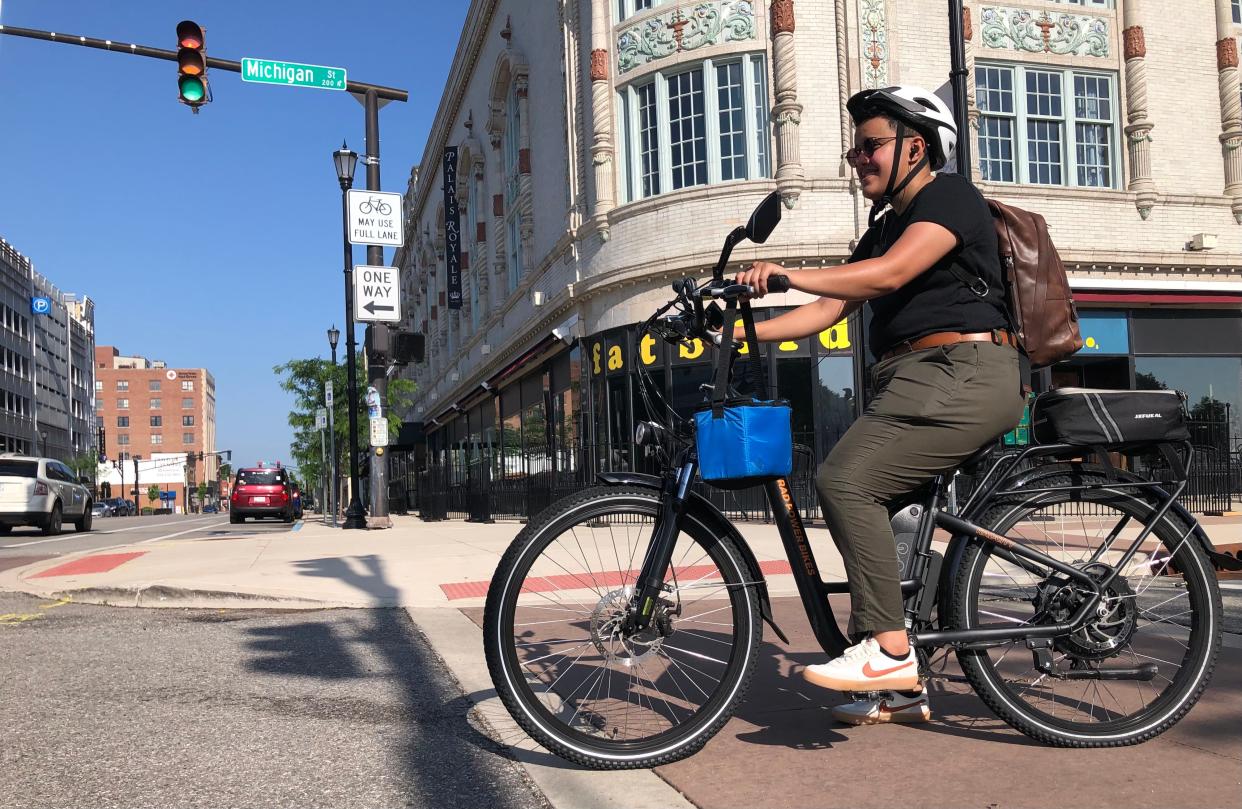
The age of electric-assisted bikes has arrived here. I’d seen it trending in the Netherlands a decade ago and, more recently, on trails in northern Michigan.
Now I regularly see people on their very own e-bikes on local trails and streets, riding the “wee!” factor of an electric tailwind. Never mind the 25 e-bikes that transportation company Bird set out in South Bend this spring.
They are hitting trails that, at their very inception, were meant for strictly nonmotorized, human-powered travel. Over the years, exceptions were made for people with disabilities to have an adaptive motor. E-bikes, it seems, are a different animal.
Local trail officials are largely giving them a chance because there haven’t been any issues with e-bikes so far. In fact, e-scooters raise more nervous looks as their users buzz about gleefully on thoroughfares.
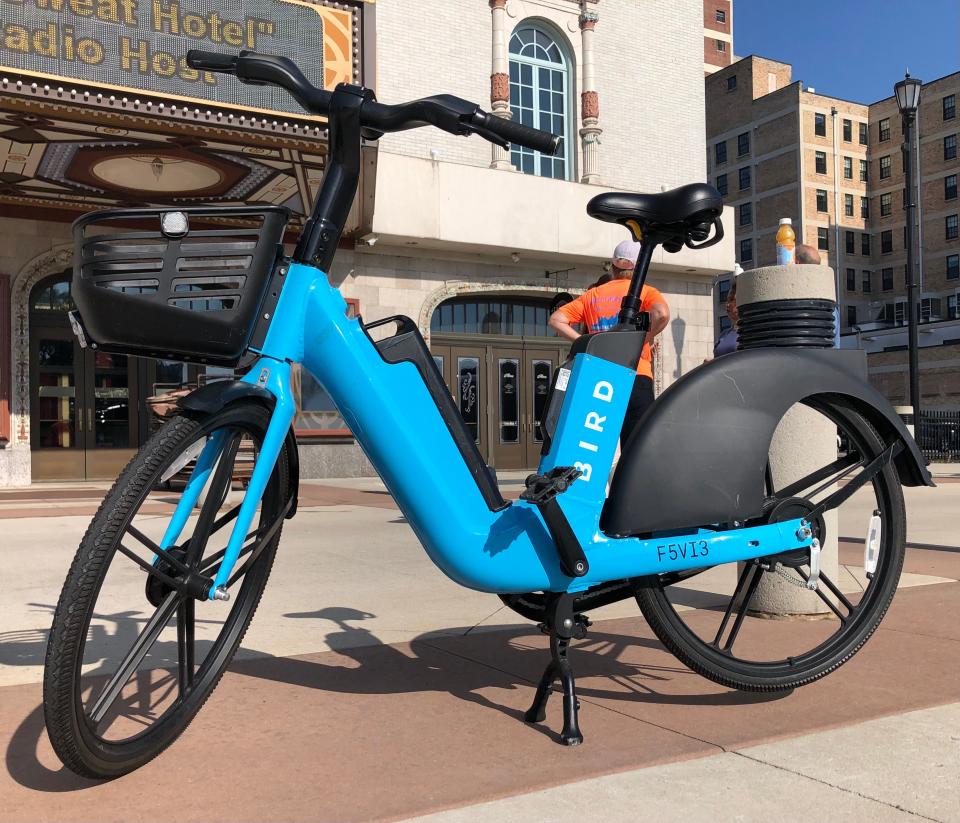
We’re not talking about classic mopeds or electric motorcycles. There are three kinds of e-bikes. For all of them, the motor kicks in when you pedal and shuts off when you hit the brakes.
Class 1 goes up to 20 mph. Class 3 goes up to 28 mph. But Class 2, which goes up to 20 mph, also adds a throttle where the motor pushes you along, even without pedaling.
Want a happy e-ride? Don't let the power push you past what you can handle. And give other trail users and motorists the same respect and warnings as you would on a regular bike.
Spring 2022: Bird electric bikes join electric scooters on South Bend streets. Here's what to know about using them
If you smell a tempting option as gas prices burn holes in our wallets, then you might consider the up-front cost: from hundreds of dollars for cheaper e-bikes — many of them sold online — to thousands of dollars, especially for e-mountain bikes from well-known brands, from Trek to Specialized.
Local bike shops have sold a brand here or there in recent years, but that has grown.
Mike Wever sensed a ripe market and did a lot of research before he opened a Pedego Electric Bikes dealership in Granger's Toscana Park in late 2021, selling and servicing the company’s array of Class 2 e-bikes from cruisers to trikes and tandems. By pure coincidence, someone else was starting a Pedego store in New Buffalo, too.
Wever has sold about 50 of these bikes, mostly since March. They’ve gone to folks with knee issues, a man with Parkinson’s disease and his own store manager who’s going through chemo for cancer, all who can use the assist. There’s also a growing interest among RV owners, he notes. And on July 8, his store will host the Pedego bus tour with food and group rides from 11 a.m. to 2 p.m.
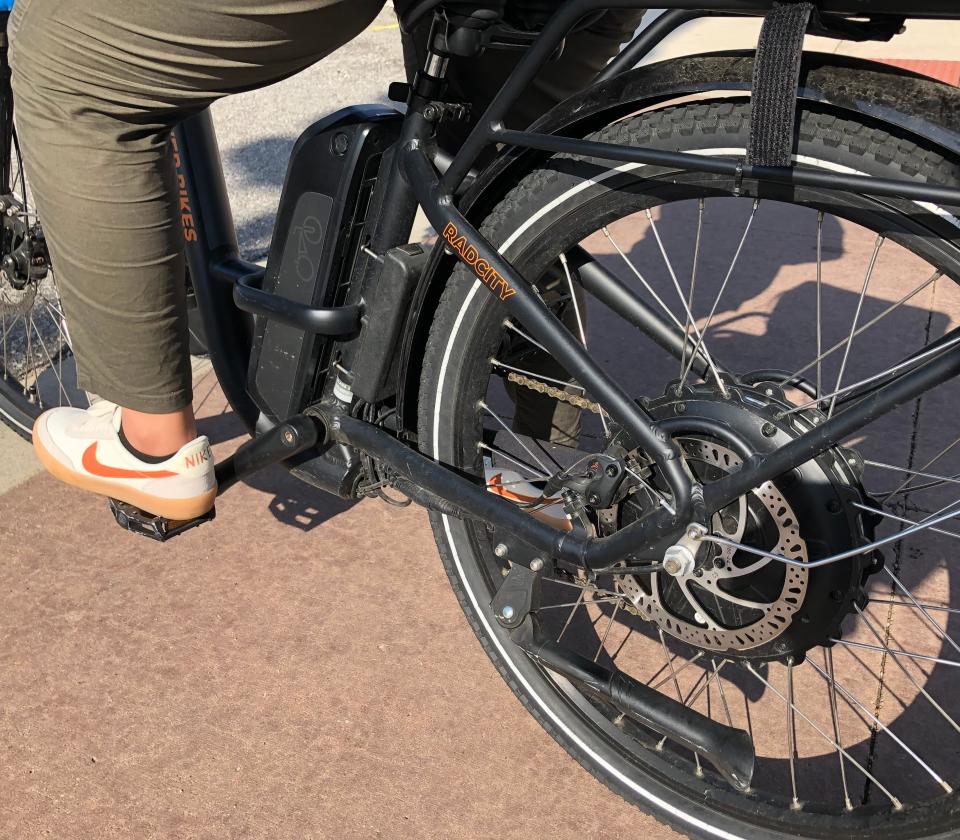
Commuter
After Norah Alwalan’s regular Schwinn bike was stolen, she made the switch in late 2020. She’d relied on her Schwinn to commute a mile or two to her job at the St. Joseph County Public Library in downtown South Bend because she doesn’t drive. Seeking new wheels, though, she wanted to arrive at work dry, without sweat, and bought an e-bike online, a 75-pounder made by Rad Power.
People ask her about her e-bike “all the time,” she says, and she even tries to “evangelize” others to give it a try, because, after all, it’s more accessible to people who are older, heavier and less fit.
“It makes you get on your bike longer,” she says, having logged more than 1,200 miles since she bought it, including weekend pleasure rides on the trail to Mishawaka.
This is a Class 2 e-bike with a throttle and max of 20 mph, but she rides it the same speed as she did on her Schwinn, 10 to 12 mph, and has no desire to go faster.
“A lot of experienced riders (without e-assist) go past me,” she adds.
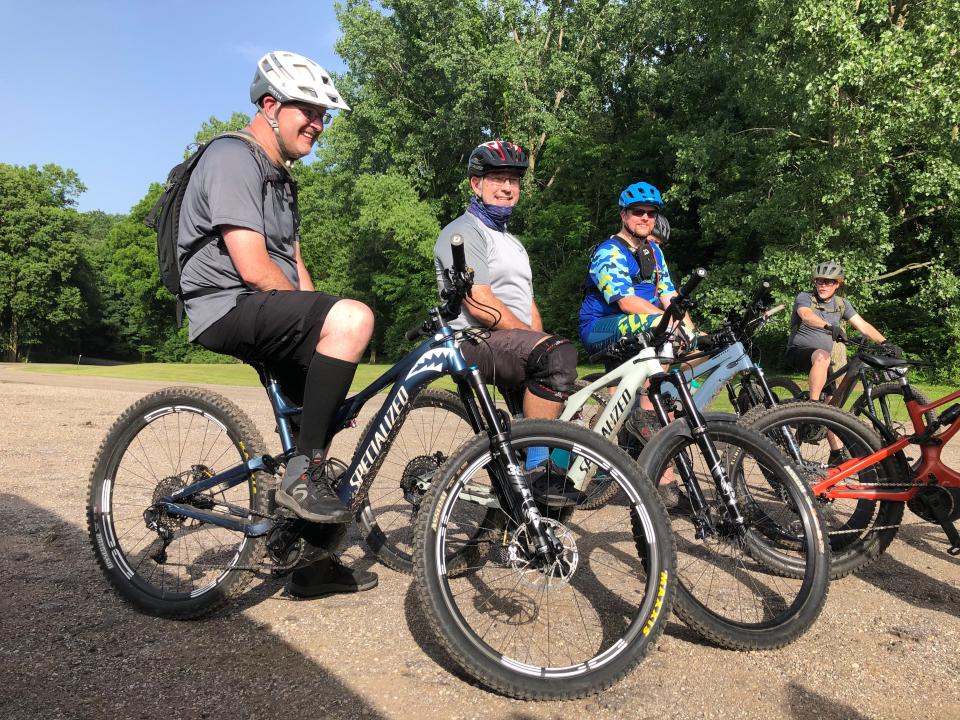
Mountain bikers
Long-time mountain biker Pierre Crevier of Stevensville says his recent switch to a roughly 45-pound e-bike means that he rides better now — in distance, speed and fun — than he did before he began chemotherapy.
Last September, surgeons removed a two-inch tumor from his head. Chemo started in October, and with his bone marrow cancer now in remission, he’s finishing off treatments this summer. His good recovery, doctors told the 63-year-old, was thanks to how well he stayed in shape. He says he’s still getting a workout on trails and doing it more often without over-stressing his body.
Chad Sperry of New Troy says he’s sleeping better since he switched to an e-bike. Along with Crevier, he regularly does the Wednesday night group rides on the mountain bike trail at Andrews University in Berrien Springs. And now, with the aid of a smart watch that monitors his body, he’s found that his heart rate no longer hits 180 beats per minute on the trail’s ample hills, as it did with a regular mountain bike. With e-assist, he hits just 150.
Before, the intense riding had left his body so revved up late in the day that, after he’d gone to bed, he wouldn’t shift into a good sleep cycle until 4 a.m. The smart watch also tracks and charts his stress and energy levels, oxygen, respiration and other factors. For Sperry, age 42, he says he’s still getting the exercise he needs.
But the wheelie-popping Mike Hardin, who started the new Facebook group Northern Indiana E-Bikers, says he doesn’t have any health issues. He just enjoys the ride.
“It takes the suck out of the sport,” Crevier says, noting the grinding hill climbs.
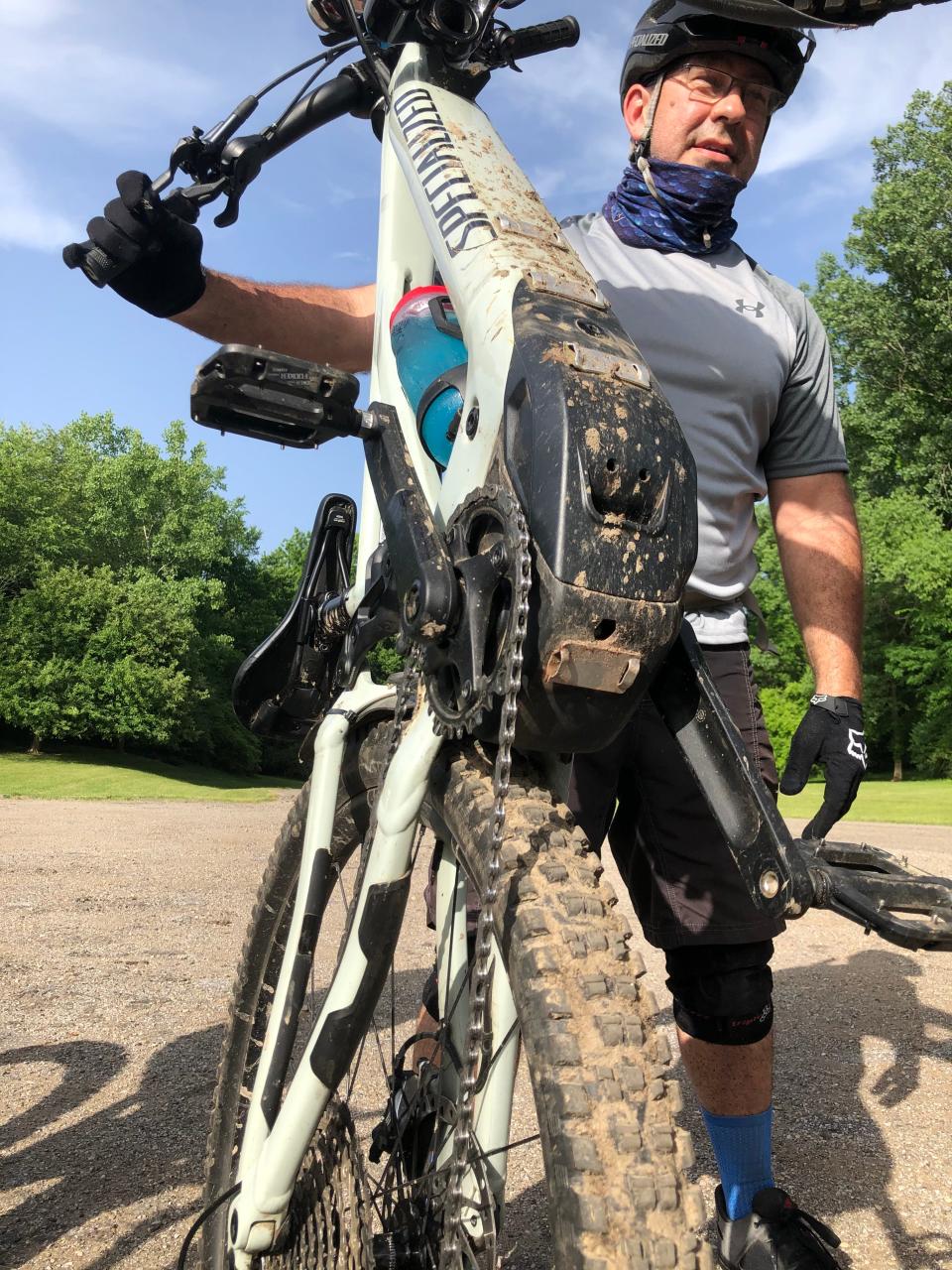
I met with the e-bikers at last week’s Andrews ride and tried one of their Class 1 bikes (no throttle, max of 20 mph). The owner set it at the lowest level of assist, “eco,” or a 25% push. I pedaled, though much softer than I’d just done on my fat bike, and I never had to change gears, even on a steep hill. I wondered if it was more than 25% help. Another guy testing one out kept saying, “Wow.”
A few mountain bikers remain skeptical. Bruce Jones, who maintains the Andrews trails, was dead-set against e-bikes early on.
"After having been around them,” he says, “I don’t feel they impact the trail in any adverse way.”
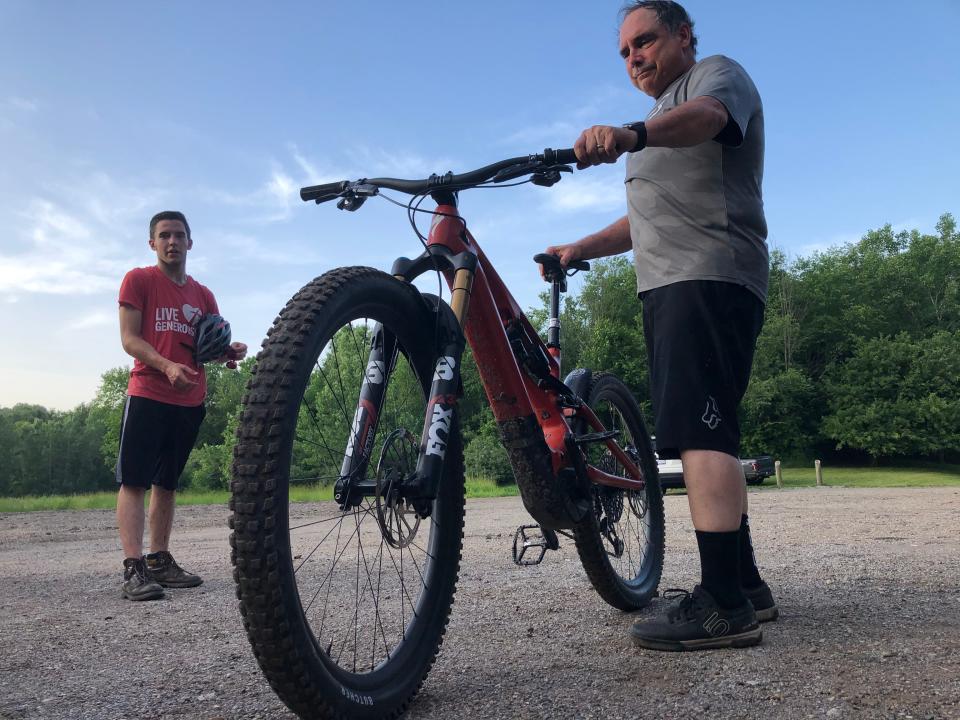
Tough Lawless race
A mountain bike race July 16 at Dr. T.K. Lawless County Park in Vandalia is gaining regional attention as one of the toughest in the Midwest. The Lawless 50 courses are longer than most races: 16, 32 and 50 miles, with elevation gain of 4,000 feet.
E-bikers wanted to compete this year, but that posed a fairness question from those who don’t use e-assist. So organizers with the Northern Indiana Mountain Bike Association have added a category for Class 1 e-bikes in the 32-mile course, with rules that Hardin helped to negotiate over matters such as swapping batteries mid-race. He’s satisfied with the result.
NIMBA President Jim Hary, who sought input from national organizations and pro riders, says it’s “the best way to make it a fun race but protect the spirit of the race in making it hard.”
The rules “may not be perfect, but they are really good,” he says, adding that NIMBA will learn from this race and tweak as needed.
Racers this July include folks from Chicago, northern Michigan, southern Indiana and Ohio, Hary says. About 10 e-bikers have registered, plus another 30 in other categories. That could grow to 90 total.
Cost is $45-$75. Register through a link in this column online.
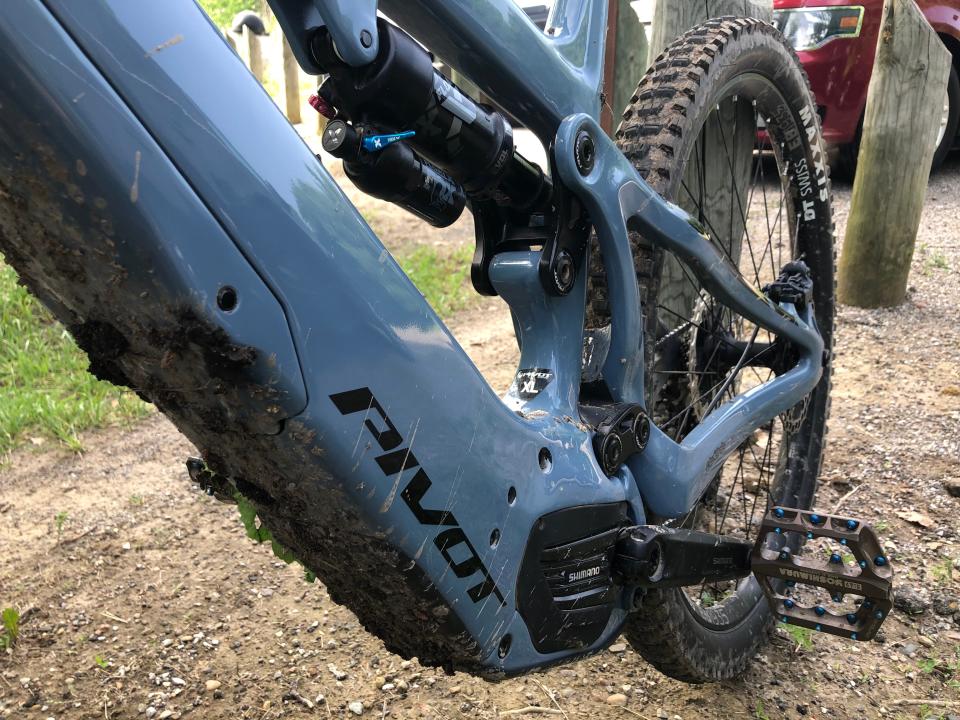
Where can you ride?
Where can you ride e-bikes? The answer is in flux because e-bikes are so new to the local scene.
State regulations in both Indiana and Michigan allow local authorities to ban or permit e-bikes on their own trails. But, without that local guidance, Indiana law permits only Class 1 and 2 e-bikes on paved or hard-surfaced trails, while Michigan permits only Class 1 on paved trails.
Until recently, both states have prohibited e-bikes on natural-surface trails, like mountain bike trails — unless local authorities allow them. But, in 2021, Indiana started to allow Class 1 e-bikes on mountain bike trails in its state parks.
Bendix Woods County Park in New Carlisle doesn’t permit e-bikes on its mountain bike trails. But St. Joseph County Parks allows Class 1 and 2 e-bikes on the paved LaSalle Trail, from Darden and Douglas roads to the Michigan line.
On other mountain bike trails, Love Creek County Park in Berrien Center allows e-bikes on a case-by-case basis while T.K. Lawless County Park in Vandalia permits only Class 1 e-bikes.
South Bend officials have talked about revising city ordinances for city parks because they don’t specifically address e-assist. Mishawaka ordinances likewise refer only to bicycles, scooters, motorized scooters and skateboards.
In Michigan, riders of Class 3 e-bikes must be at least age 14 to ride and must wear a helmet if ages 14-18. There are no age limits for the other classes.
Find columnist Joseph Dits on Facebook at SBTOutdoorAdventures or 574-235-6158 or jdits@sbtinfo.com.
This article originally appeared on South Bend Tribune: E-bikes: what they are and local regulations on mountain bike trails

